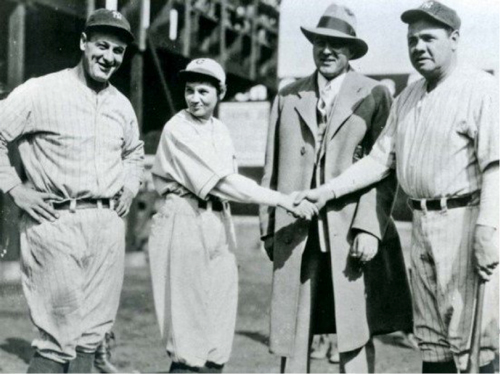On April 2, 1931, the New York Yankees were in Chattanooga, TN, for an exhibition game against the minor league Chattanooga Lookouts. In the first inning, a pitcher who had signed with the Lookouts only a week before, took the mound in relief. The legendary Babe Ruth was the next batter. He swung at and missed the first two pitches. The next pitch left him looking, and the mighty Babe had struck out. Following Ruth was the Iron Horse, Lou Gehrig. Three pitches, three swings, and Gehrig struck out as well.
Who was this 5’ 5,” 130 lb rookie who fanned two baseball greats? None other than a 17 year old girl, Verne Beatrice “Jackie” Mitchell, an optometrist’s daughter. Some have argued that the strikeouts were a publicity stunt, which Ruth was known to perpetrate from time to time, as was Lookouts owner, Joe Engel. But Leslie Heaphy, author of “Encyclopedia of Women and Baseball,” says otherwise. She notes that Mitchell was a lefty with an amazing sinking fastball, a pitch more often used by right handed pitchers. Did she surprise both Ruth and Gehrig with her command of that pitch? Ruth and Gehrig both batted lefty, which also gave Mitchell an advantage.
 Image: SportsHistoryWeekly.com |
It seems strange to be something of a legend at a young age, and then to live quietly as optician. But then, perhaps Mitchell used what she knew about sports vision to help her patients. She would know that acuity was critical, of course, but did she understand visual skills such as depth perception, efficient eye movements, focusing, peripheral vision, and eye hand coordination? What about tracking skills, recognition, accurate binocular eye movements, and the ability to quickly assess and process visual information such as location of the ball, the speed of the runner, and the distance to the bag? I’m willing to bet she understood quite a bit about those skills, and was more than happy to share her personal expertise!
You can learn more about sports vision and sports eyewear with our CE, Upping Your Game: Taking Outdoor Sport Eyewear to the Next Level, Part 2, at 2020mag.com/ce.













